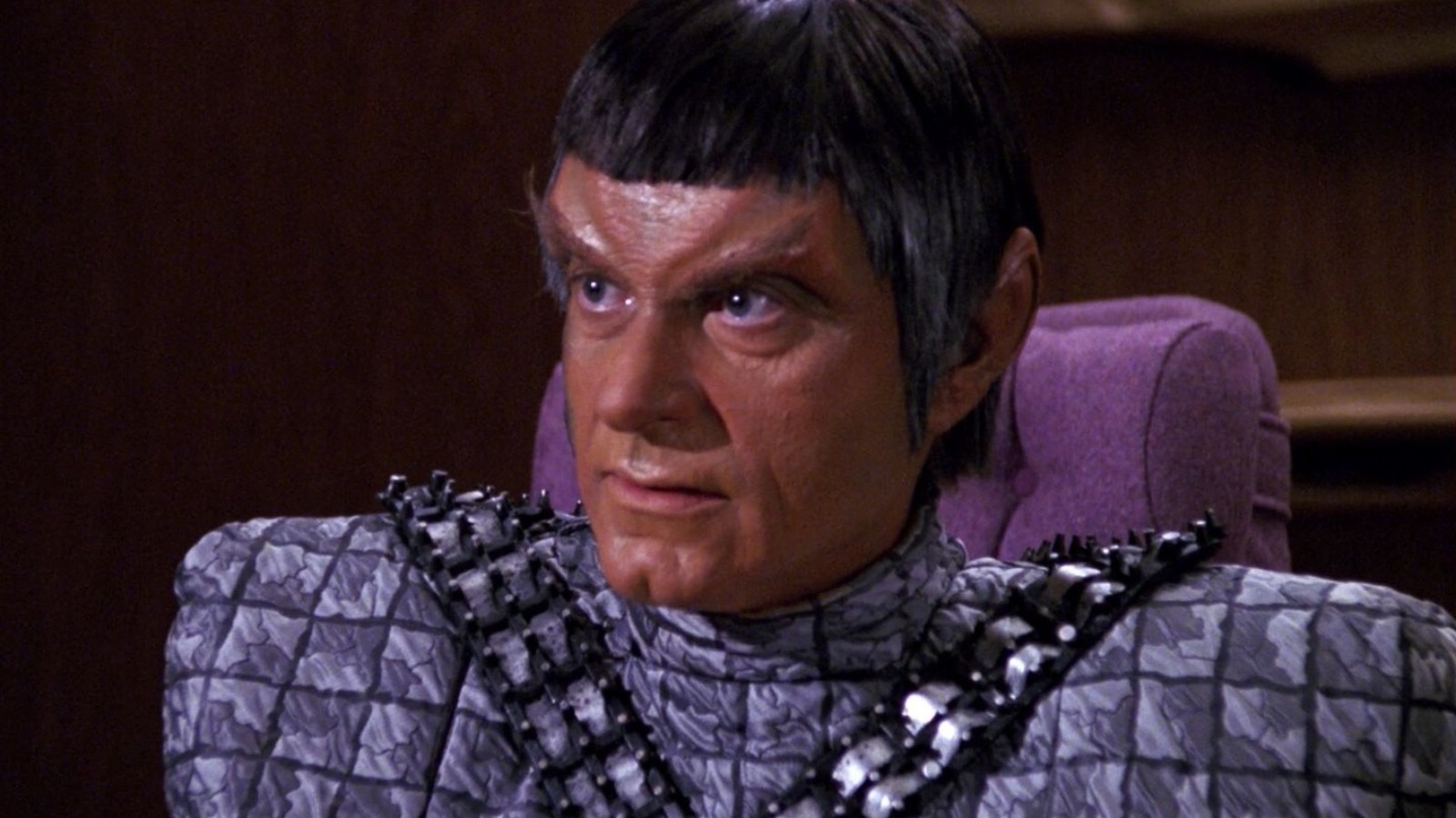It’s been acknowledged throughout “Star Trek” that the Vulcans and the Romulans were originally the same species, but separated long ago and evolved differently on different worlds. They are similar, yet not identical in anatomy. As such, the Romulans couldn’t stray too far from the classical Vulcan design. Westmore noted:
“From the very first moment [Romulans] appeared on-screen, the viewer had to take them seriously, rather than seeing them as stereotyped villains with pointed ears. […] The two races were completely different on a cultural level, but it wasn’t that easy to tell them apart physically. They had the same basic skin color, they wore the same hairstyle, and both races had pointed ears and archless eyebrows. Aside from dressing them in different clothes, what were we going to do to bring out the diversity between them?”
What Westmore could do, though, is communicate instantly — through his forehead designs — that the Romulans were villains. Without adding a caveman-like brow, Westmore decided to build on their foreheads, explaining:
“I devised a forehead that had a dip in the center, and then I hollowed out the temple area. We wanted to stay close to their natural forehead, not making them look Neanderthal, but giving them a built-in sullen expression they couldn’t get away from.”
It works. The Romulans have, essentially, permanent “angry eyes.” There has yet to be any in-universe explanation as to why the Romulans suddenly had enlarged foreheads 80 years after the events of the original series, but it’s one of those details most Trekkies happily overlook. It would, however, eventually be canonically explained why Klingons looked more human in the original series and had enlarged foreheads in the “Next Generation” days; it turns out one of Data’s ancestors tinkered with their DNA.

